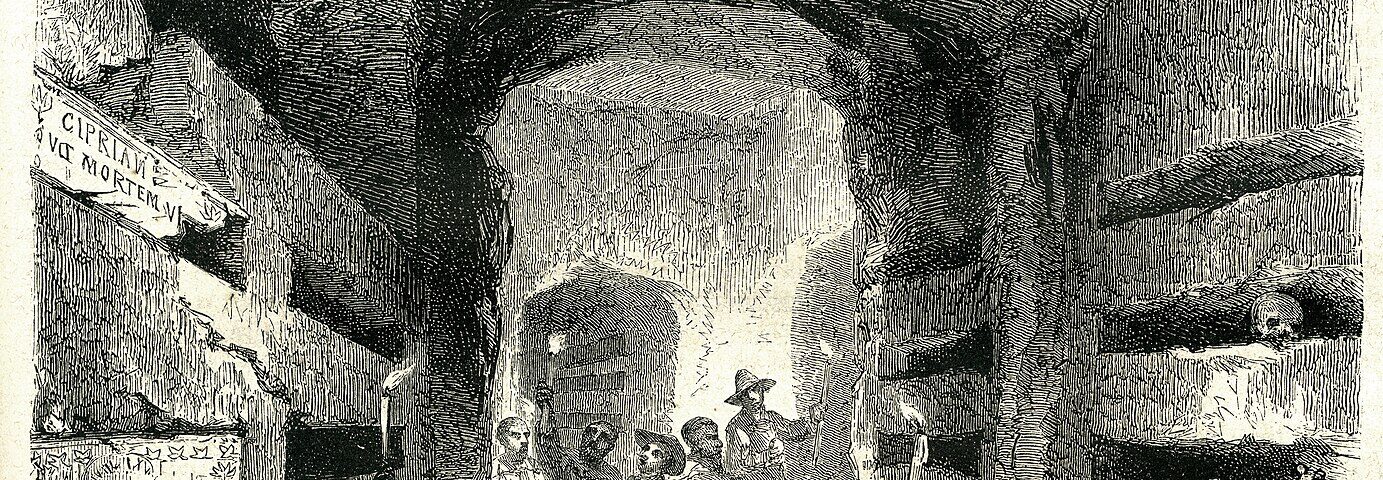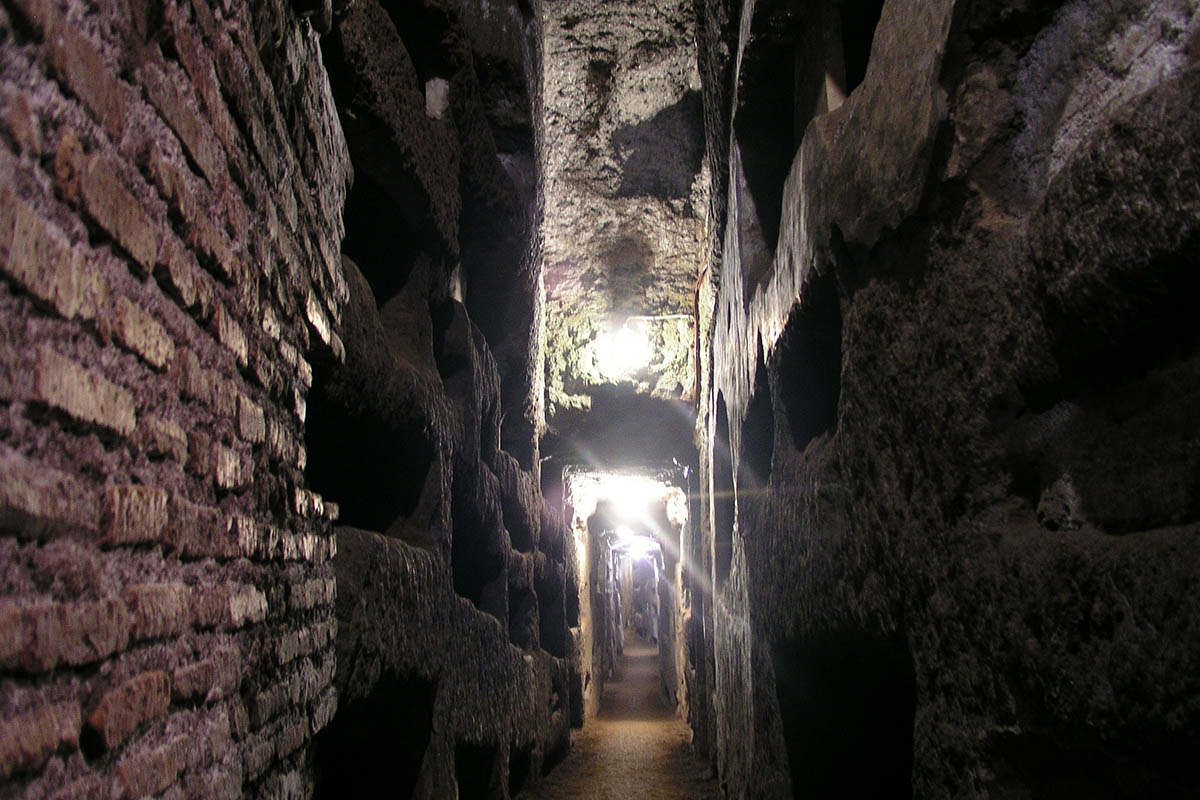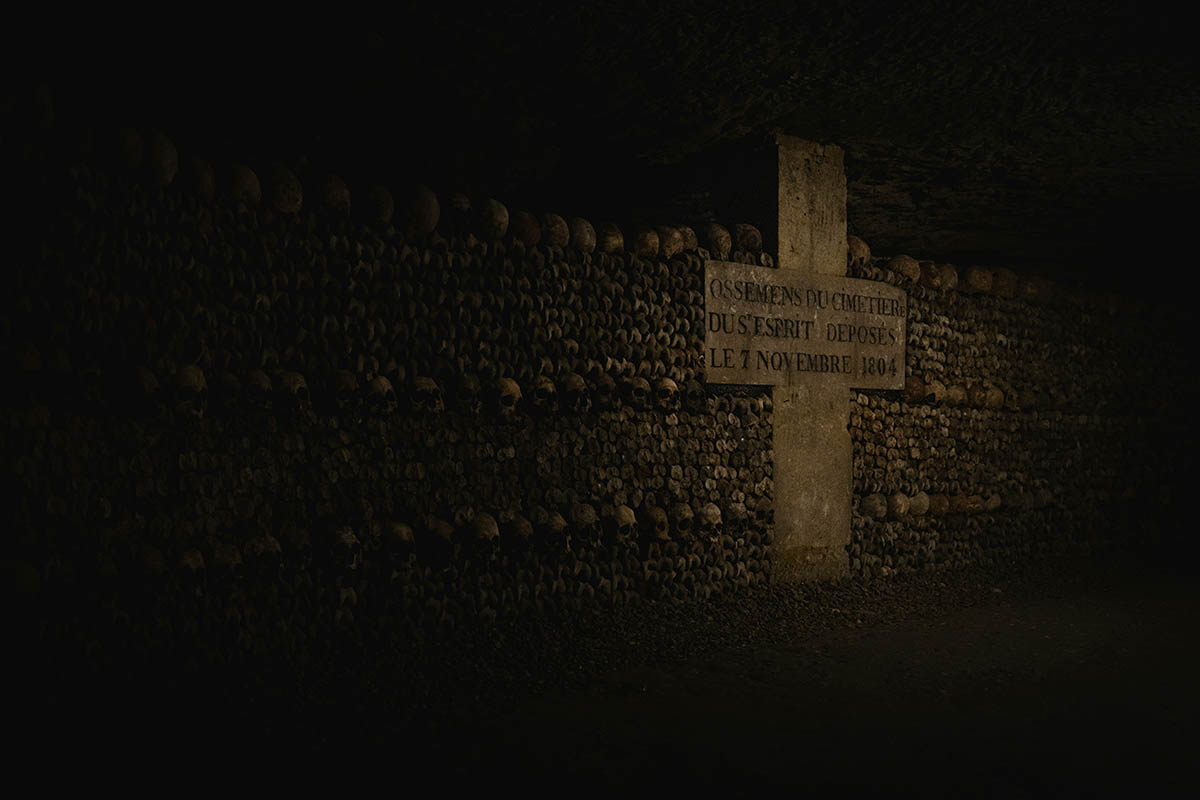
Fig and grape seeds, hazelnuts and pine nuts, dice, sandal pins, hundreds of bronze coins and even a gold coin. In recent years, artefacts found during cleaning work in the sewers of the Colosseum in Rome have made it possible to better imagine what events at this monument were like. Similarly, work on the car park of a new hotel came to a halt after the remains of what could be Nero’s legendary theater were found.
Cities like Rome have a parallel world beneath the ground. Over the centuries, the remains of ancient civilizations get buried, waiting to be brought to light one day. But their underground reality does not end there. Already in Roman times, that which was not to be displayed or even to be hidden was built under the ground.
A good example of this is the catacombs, a large network of tunnels that were used for years as a place of burial and clandestine worship. Centuries later, this system was again employed in the city of Paris, albeit with a very different purpose. Other cities have also chosen to create large underground burial sites.
The Catacombs of Rome
In the south of Rome, about six kilometers from the Colosseum and very close to where the Via Appia Antica begins, we find the catacombs of St. Callixtus. Under the ground, a succession of floors reach a total depth of 20 meters and extend in a network of galleries almost 20 kilometers long. They are one of the largest and best preserved catacombs in Rome.
As in other catacombs such as those of Domitila or San Sebastián, it is clear what these structures were used for. Most of these narrow galleries have rectangular holes on their sides where the corpses were placed, housing up to hundreds or thousands of communal graves.

Interior of the Catacombs of Domitila. Dnalor_01 (Wikimedia Commons)
The upper areas were the first to be excavated (and bear the oldest inscriptions). To continue excavating and facilitate the transit of people, skylights or wells were installed in the roofs for lighting and ventilation.
Some corridors were widened to make room for larger chambers that could be used as meeting and prayer places and that still maintain symbols and paintings to this day. But why did they begin to excavate the catacombs in the first place? Why did people decide to bury the dead in long tunnels underground? To understand this, it is necessary to travel back to Rome in the 2nd century A.D.
At that time, the practice of Christianity was clandestine. The religion was beginning to become popular among all social classes and some of the principles it defended (such as monotheism) clashed head-on with the foundations and morals of the Roman Empire, a which had a polytheistic religion centered on the figure of the emperor. In addition, these early Christians did not support cremation, which was common among the Romans.
This led the early Christians and followers of other religions and beliefs to create underground necropolises from the end of the 2nd century A.D. until several centuries later, when freedom of worship allowed them to adopt other methods more similar to those we know today.
The transfer of bones in Paris
Hundreds of years later, another city excavated its own catacombs: Paris, a city whose history is very different from that of Rome. At the end of the 18th century, the city faced a twofold problem: after more than a thousand years of use, the city’s cemeteries were full; moreover, poor management of them was causing serious health problems.
The authorities chose to move part of the human bones underground, specifically to large quarries that had been exploited during previous centuries for materials to build the city. This decision also solved the problem of the Tombe-Issoire quarries, whose use had been banned following major soil subsidence during the 18th century.
Beginning in the 1780s, the transfer of bones in Paris shared something with the creation of the catacombs in Rome: it was done secretly under the cover of night to avoid complaints of social actors such as the church. As the process of moving all the bones took several months, however, it soon became an open secret.

The Catacombs of Paris. Liam McGarry (Unsplash)
Later, these bone-filled quarries were given the name catacombs. Although they extend for fewer kilometers than those of Rome, they are also 20 meters deep and expand like a labyrinth over an area of about 800 hectares under the city’s ground.
The new life of catacombs
Catacombs such as those of St. Callixtus, St. Sebastian, St. Priscilla or St. Agnes can be easily visited in Rome. The same is true of those in Paris, which were opened to the public in 1809. On one occasion, the question of installing temporary accommodation under the ground of the French city during Halloween nights was even considered.
Every year, thousands of tourists and onlookers descend the stairs of the catacombs in different cities around the world to learn more about this unique type of infrastructure and to enjoy a different experience. The same happens in churches and chapels that have been decorated with thousands of bones.
The funerary culture expressed in these places, which have remained practically unchanged over the centuries, has long aroused curiosity. As the inscription that welcomes visitors to the Bone Chapel in Évora, Portugal, suggests: “We the bones are here waiting for you.”





2 comments
Netsol Water
06 of March of 2024
Thank You for the sharing such kind of informative post. We Netsol Water is working towards sustainable development and water treatment. Kindly lets a look that how we are contributing in water treatment. Effluent Treatment Plant Manufacturer in Delhi
Netsol Water
06 of March of 2024
Thank You for the sharing such kind of informative post. We Netsol Water is working towards sustainable development and water treatment. Kindly lets a look that how we are contributing in water treatment. Effluent Treatment Plant Manufacturer in Delhi